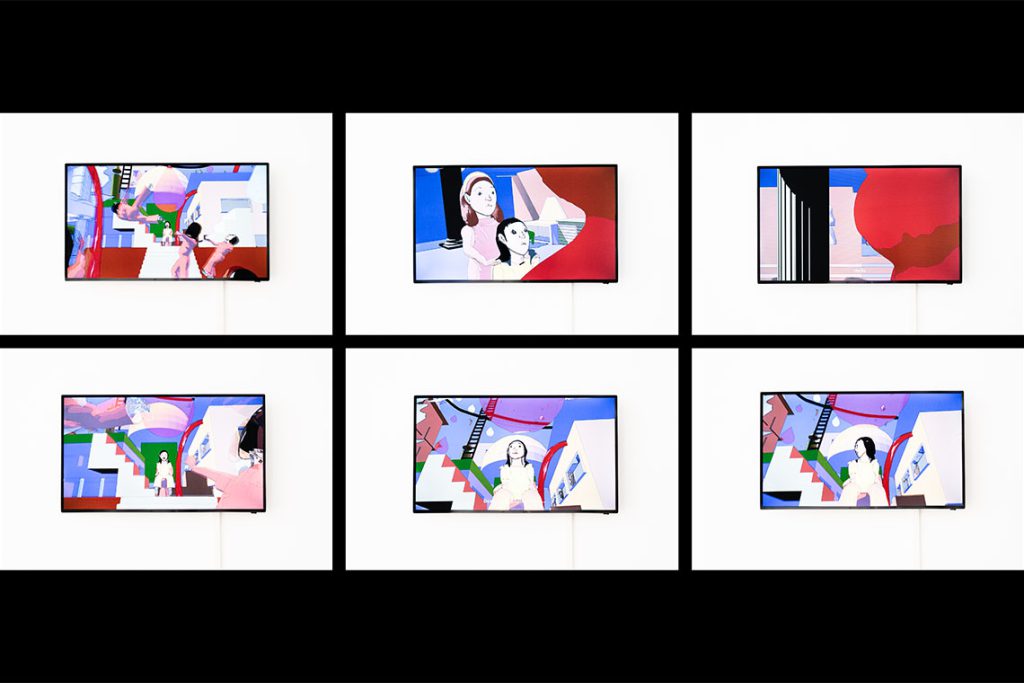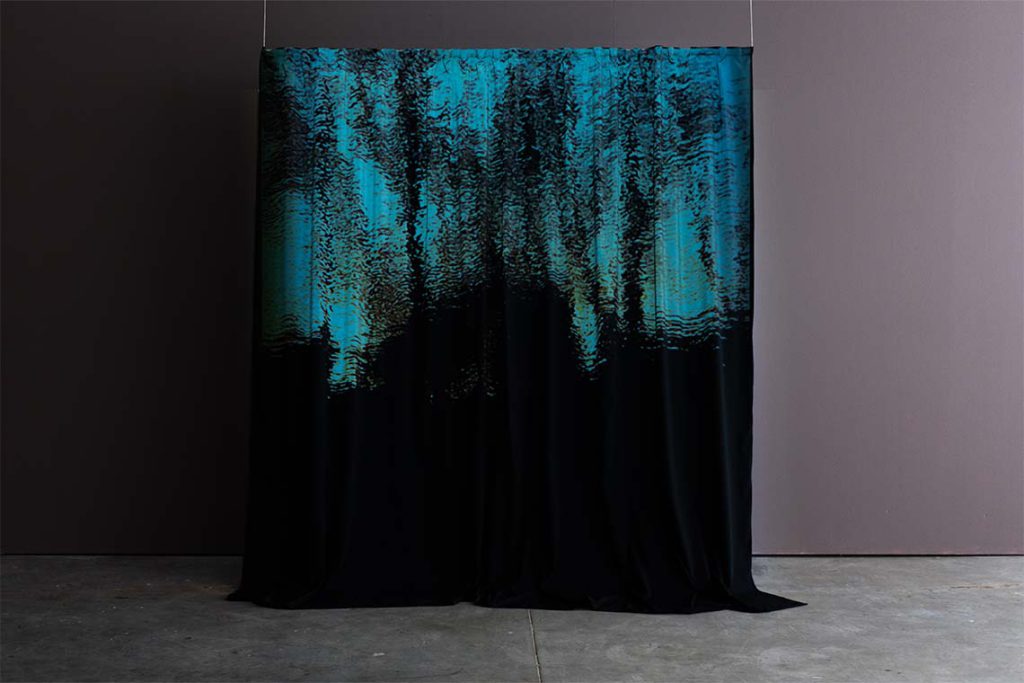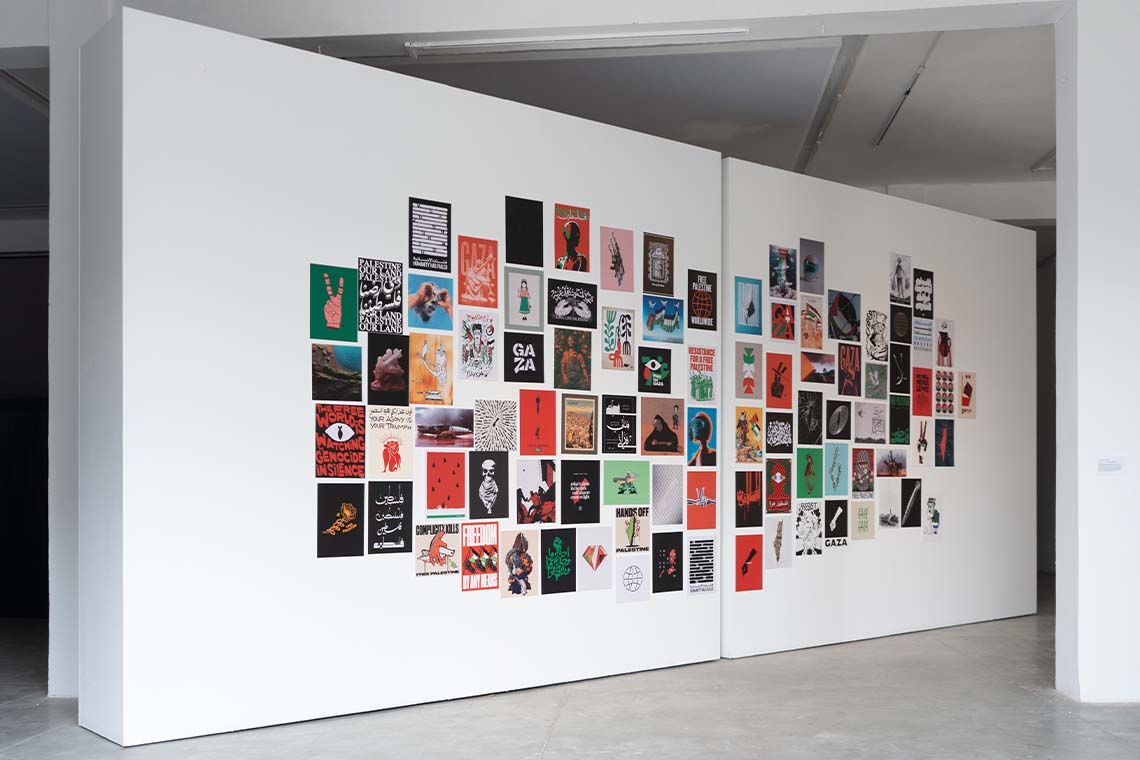Spotlighting Palestinian artists, The Deluge and the Tree at B7L9 captures the nation’s collective consciousness, unpacking its layers of nostalgia, grief and visions for an alternative future.
What happens after the storm? The turbulent inquiry is at the heart of B7L9’s latest exhibition, The Deluge and the Tree. Curated by London- and Tunis-based writer and curator Karim Sultan, the show draws inspiration from Fadwa Tuqan’s poem of the same name.
The storm in question is the haunting spectre of occupation. The show, featuring a roster of Palestinian artists, unravels layers of remembrance, mourning and continuation within their experiences. In effect, The Deluge and the Tree is a journey through the collective Palestinian psyche. But it’s curated to provoke introspection and dialogue, transcending the confines of conventional representation.
An archive of posters submitted by designers from around the globe kicks off the exhibition. They read calls to liberation and resistance. Vienna-based artist Firas Shehadeh’s installation, On my way back, I found an image of home or I thought of exile (2018),sets a meditative process in motion, one that takes shape throughout the show through an array of media and perspectives.
The artist and researcher challenges geographical boundaries, performing a mental exercise familiar to those who belong to imaginary homes; a welcome cognitive dissonance that makes possible a simultaneous existence in two places. Here, landscape is the medium. Capturing bees on a flowering bush in Vienna, he recalls his family tradition of beekeeping in his hometown of al-Barriyya, a Palestinian village that became depopulated in the Nakba of 1948.

Before other interpretations of memory and place emerge, Dina Nazmi Khorchid’s projections in Land, Untitled (A Stream of Darkness Runs) (2024) similarly transport viewers into a realm where landscape intersects with personal iconography. Trees and birds appear as potent symbols of displacement and nostalgia, projected on fabric. It’s a departure from her usually woven textile works, due to logistic hurdles often faced by artists in Tunisia over the shipping of large-scale works and which are nearly impossible to bypass.
In Signal Feel Collision (2022), a series of eight digital prints originally commissioned by the Singapore Biennale, Shehadeh offers a critique of the mechanisms that seek to erase indigenous narratives and identities, and the efforts made by those in the Global South to bypass censorship imposed by companies like Meta. Here, aluminum acts as the surface to daily scenes of Palestinian resistance, distorted to require a decoding – much like the veiled language used by Palestinians and other oppressed populations to communicate within complex algorithms.
Likewise, by way of its medium, Nerian Keywan’s enigmatic animated story A Bloody Situation (2023)transports viewers away from reality – an enduring motif depicted in The Deluge and The Tree, which resonates increasingly with each artwork. Offering a surreal glimpse into the complexities of coming of age amidst chaos, the piece tells a story of a 10-year-old girl named Nara and the awkward interactions typical of that age. Keywan is exploring femininity and the mundane, inviting viewers to reflect on the political nuances within personal experiences.
Reinforcing the importance of displaced people to preserve ties with their homeland while seeking respite from harsh realities, Shehadeh’s Like An Event In A Dream Dreamt By Another – Rehearsal (2023) offers a glimpse into the transformative power of digital spaces. Through the lens of video game modding, Shehadeh unveils the subversive potential of virtual worlds within popular games like Grand Theft Auto V, where players reimagine Palestine beyond the confines of colonial oppression.

Under the skillful curation of Karim Sultan, the show seamlessly transitions to intimate vignettes in Jerusalem’s Old City with Shadi Habib Allah’s video installation, 30kg Shine (2017). First, it delves into the realm of urban legend, focusing on a tale that haunted the Old City in the 1930s. The viewer is introduced to an elderly woman residing in the home at the centre of the tale, who fiercely safeguards her residence and familial heritage despite challenges. Her personal story is juxtaposed with footage of an Israeli ‘tunnel cemetery’, constructed by Palestinian workers who toil within the site under constraints of specific permits.
Shadi explores different aspects of existence in the film, including object, body and spirit, and considers also how agency is shared among these different states of being. The film stands as a testament to the invisible struggles and enduring resilience of marginalised communities.
It all comes to a head with Sarah Risheq’s if_the_archive_could_speak (2022), a 3-minute film where – much like the exhibition itself, archives come to life and speak. Among a series of pertinent inquiries, the monologue presents the question of “What happens when the archive becomes a fugitive?”, driving the showcase full circle back to its initial positing of “What happens after the storm?”.



